Herbs & Plants. Bridelia micrantha. A robust medicinal plant.
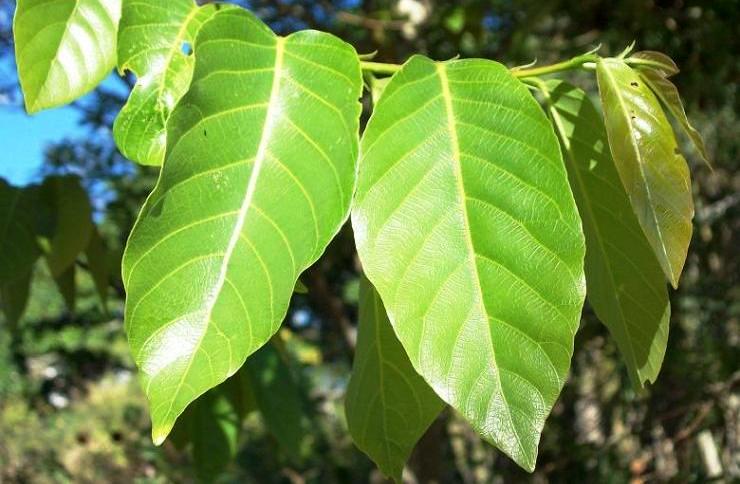
It is a small to medium semi-deciduous to deciduous tree up to 20m in height with a dense rounded crown. The plant is traditionally used in tropical Africa to treat a wide range of human diseases.
The bark on young branches is grey-brown and smooth while on older branches, the stems are dark brown and rough, cracking into squares; branches often spiny; slash thin, fibrous, brown to dark red. Leaves alternate and simple. Inflorescence with flowers in axillary clusters containing male and female flowers; male flowers on pedicles 1-2 mm long. Fruit black, sub globose to ellipsoid drupe each with 1 seed.
Bridelia micrantha has been identified as one of the few plant species that should be integrated in the domestication process in farming systems in sub-Saharan Africa to support medicinal, nutritional and income security of local communities.
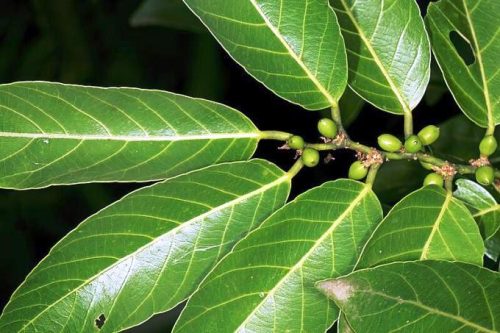
Bridelia micrantha, belonging to the family Phyllanthaceae . CC BY-NC 3.0/ JMK
Bridelia micrantha, belonging to the family Phyllanthaceae (formerly Euphorbiaceae) is traditionally used in tropical Africa to treat a wide range of human diseases including malaria, AIDS/HIV, anemia, asthma, cancer, colic, cough, diabetes, diarrhea, enlarged spleen, gonorrhea, hernia, joint pain, menstruation that is abnormal or painful, stomachaches and other stomach problems, syphilis, thrush, urinary tract infections, yellow fever, jaundice, and as a strong laxative. The plant is also used as anti-abortifacient, an antidote, and to treat diverse conditions of the central nervous system, eye infections, the gastrointestinal system, respiratory system, and the skin diseases including scabies and used hygienically as a mouth-wash.
The bark of Bridelia micrantha is used to treat burns, wounds, venereal diseases, tapeworm, diarrhoea and toothache.
The sticky substance from the inner bark is applied to fresh wounds to form an effective binding of the tissues. The bark decoction is widely used in the treatment of wounds, and as a purgative, abortifacient, aphrodisiac, cough and sore throat. In Southern Africa, the bark infusion/decoction is used as a remedy for headache, sore joints, sore eyes, diarrhea, venereal diseases and fever.
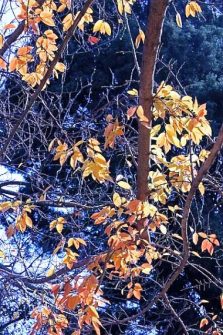
Bridelia micrantha orange leaves. CC BY-NC 3.0/ Purves, M.
A bark decoction is taken as a remedy for stomachache and tapeworm. The bark is also boiled to make a soup for treating diarrhea in children, or is mixed with milk and drunk as a tonic. Bark extract is applied to scabies. The powdered bark is applied to burns to speed healing. The bark, after the removal of the corky outer layer is administered in various preparations for stomach and intestinal complaints, and for conditions in which the stomach is considered the cause-sterility, amenorrhoea, dysmenorrhoea, beriberi, and oedemas. Some of the medicine-men use the bark for bringing to full term ‘prolonged pregnancy’, doubtless false pregnancy or obesity. The fresh bark is slightly aromatic and is used for treatment of stomachaches and as a powerful purge in cases of obstinate constipation and poisoning. Powdered bark is used in decoctions with palm-oil as a cough medicine. The hot decoction of bark and leaves may be held in the mouth for sores and to relieve sore gums, toothache and cough.
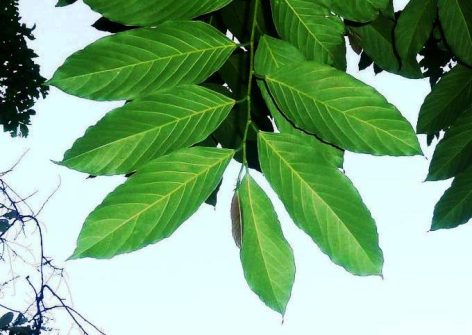
A decoction of Bridelia micrantha roots is drunk to cure aching joints. CC BY-NC 4.0/ SAplants
A decoction of Bridelia micrantha roots is drunk to cure aching joints. The root is used as a remedy for severe epigastric pain. A decoction of the root is drunk as a purgative, an anthelmintic or an antidote for poison, as it causes vomiting or diarrhoea that gets rid of the poison. An infusion made from the root is taken orally for coughs. The roots are used to treat symptoms of non-insulin dependent diabetes mellitus such as excessive thirst and urine production, and sweating. Root is used to treat stomach pains, possibly gastric ulcers, or can be powdered and mixed with fat or oil and rubbed into the head to cure headaches. The root may also be given for stomach-troubles as a laxative. Root-sap instilled into the anus for the treatment for oxyuris worm.
The leaves are used as a laxative and the young leaves chewed against headache. The leaf sap of Bridelia micrantha is used to treat sore eyes and in a decoction with a number of other plants for treatment of conjunctivitis. In some communities, the leaf-decoction is given as treatment for guinea-worm. Leaf and root extracts are applied as anthelmintic and to treat malaria and trypanosomiasis.
Bark, leaves and roots are pounded for external use on bruises, boils, ulcers, dislocations and burns.
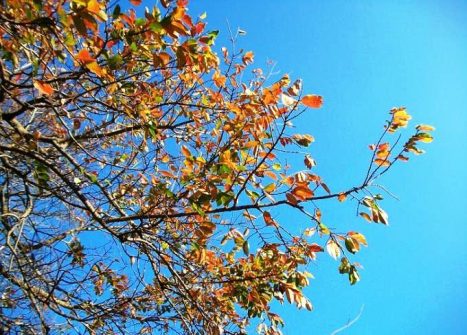
The leaves are used as a laxative and the young leaves chewed against headache. CC BY-NC 4.0/ SAplants
The fruits are sweet and edible when ripe and are widely eaten particularly by children and can be used to make jams and juices. The bark is a source of tannins plus red and black dyes. A red dye is extracted by boiling the bark. A black dye is obtained from the leaves, twigs and wood. The fruit also contains a dye. The resin is used for sealing cracks in doors, baskets, pottery and winnowing trays. In East Africa, the bark is pounded to a paste which is used to seal cracks in doors, and baskets. Bridelia micrantha is also an important timber tree species in tropical Africa and the species is being overexploited as a source of wood for construction, poles, furniture, mortars, spoons and tool handles. The leaves are fed to cattle. In West Africa, the bark is added to palm wine to improve the taste.
(Photo: CC BY-SA 3.0/ Purves, M.)
Richard Komakech



